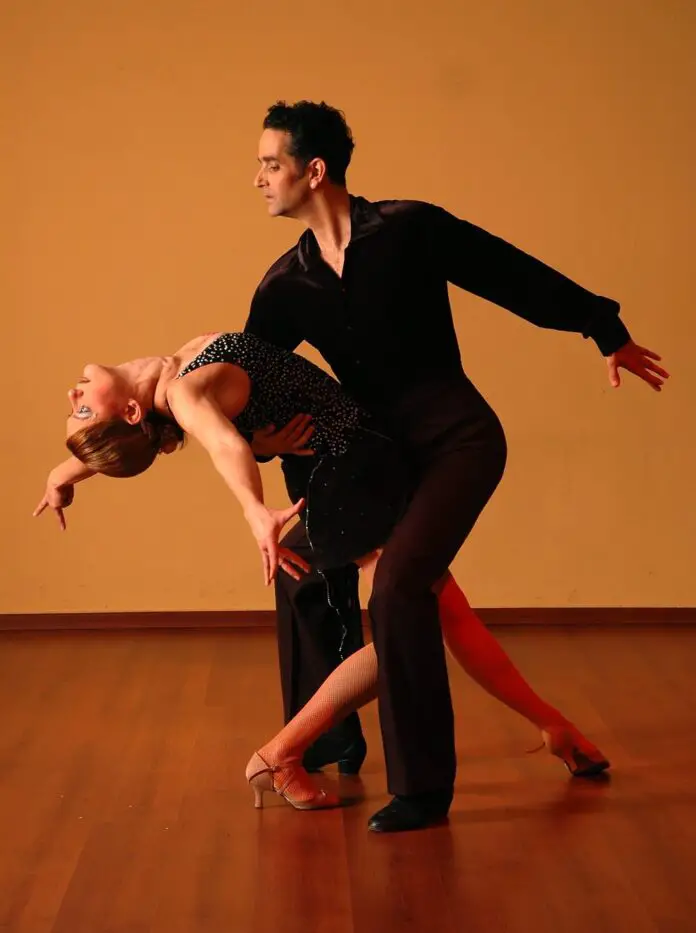If you love to dance and plan to explore ballroom dancing, purchasing a quality pair of dance shoes is one of the best investments you can make. You might be surprised with their price tags- these shoes aren’t necessarily cheap. The higher the quality, the more expensive the shoes but with reason. They aren’t made to just look good; they are made to ensure you glide like a swan, be as agile as a gazelle and fly like a butterfly across the ballroom.
These shoes support dancers’ movements and give them a secure hold on the dance floor. What’s more, quality dance shoes correct poor posture, which can adversely affect the legs, pelvis, and spine. But how do you define quality dance shoes, and how do they differ from regular shoes?

Ballroom dance shoes need a unique sole. The right sole is vital in the long-term health of your feet. You need to glide across the floor literally and have sufficient grip for good support when taking fast steps. Quality dance shoes always have a flexible suede sole, also known as a suede sole. Its high resistance and long life characterize this unique suede. If the suede sole becomes slick from dancing, you can scrape it with a special brush to roughen it up. Only suede soles offer optimum grip and excellent glide, both essential for dancing.
Dance shoes also need a unique hardened steel midsole to make them exceptionally resistant. This particular feature gives dancers such a feeling of security and robust steps for each move they make. Stability and robustness are key when it comes to the midsoles of ballroom dance shoes. Even under extreme stress, the shoe supports the foot exactly where it needs to be without giving way or damaging your feet. Steel shanks provide the shoe and the dancer with excellent stability without compromising forefoot flexibility.
Dance shoes must have a very robust heel structure. They must be remarkably stable and resistant, especially for dances where heel steps are common, such as waltzing. Solid heels provide stability and security for the dancer. When you’re in the market for dance shoes, try them out first. Quality ballroom dance shoes have the steel shank anchored several times in the heel of these dance shoes. This prevents the shoe from flexing in critical areas, such as the transition between heel and sole. The heel pad and shock absorber in the heel also provide pleasant comfort and protect the dancer’s joints.
A supple midsole is essential for dance shoes. Quality models, therefore, use exceptionally soft materials to cushion the sole. When purchasing dance shoes, make sure you’re getting flexible latex midsole. This cushions every step the dancer takes so they can dance the night away without a care.
While standard dance shoes hold the foot securely, even without straps, Latin dance shoes need an ankle strap or crossed straps to ensure that the shoe fits snugly. The strap isn’t there just for aesthetic reasons. It’s there for a purpose. Quality dance shoes have straps that are made of solid material. Ask the manufacturer or the seller of the shoe what kind of material is used. Go for high-tech, tear-resistant material for straps. Not only will you be dancing comfortably, but you’ll also be able to wear these shoes for a long time.
Look out for quality suede and Nappa leathers, as well as top-quality brocade and satin. Good-quality, supple leathers hug the foot and adapt gradually to its shape. You’ll feel this the moment you slip your feet into these shoes. You’ll also be able to tell the quality of the shoes by looking at the brocade work and satin used in these shoes. Luxurious brocade and dreamily soft satin impress with their elegance and exclusive allure which helps complement any outfit you wear.
For private lessons and group lessons held in a dance studio, it is recommended that you wear dance shoes with a suede sole; this is an advantage that will make the difference between you and those who do not wear them. 99.9% of ballroom dance studios worthy of the name should be equipped with a wooden dance floor. The right floors will adhere to the right dance shoes. In addition, you do not have to worry about damaging your dance shoes because the floors are often maintained to ensure long-lasting practice.
Wearing dress shoes with soles designed for outdoor use is not a good idea because they will get dirty and damage the dance floor. Furthermore, street shoes do not allow you to express your dancing at its best.
The floors of clubs or bars that offer salsa or rock evenings sometimes become very sticky and dirty due to splashes of sticky liquids. These poorly or poorly maintained floors are the worst enemies of your dance shoes. Furthermore, they must provide the best conditions for spinning or moving while dancing.
For these reasons, you should be careful with your shoes when dancing in a salsa club or bar.
However, the most keen of dancers wear dancing shoes in all circumstances. They prioritize efficiency in their dancing over the survival of their dancing shoes. Because of this, it is best to invest in high-quality ballroom dance shoes as they last long, is value for your money, is comfortable to dance in and protects your feet, ankles and toes. These dancers often own more than one pair of dance shoes and choose a model that is already used.
If you want to wear your suede sole dance shoes on poorly maintained floors, it is recommended to use special dance shoe brushes. Brushing the soles of your dance shoes will extend their lifespan.
##



